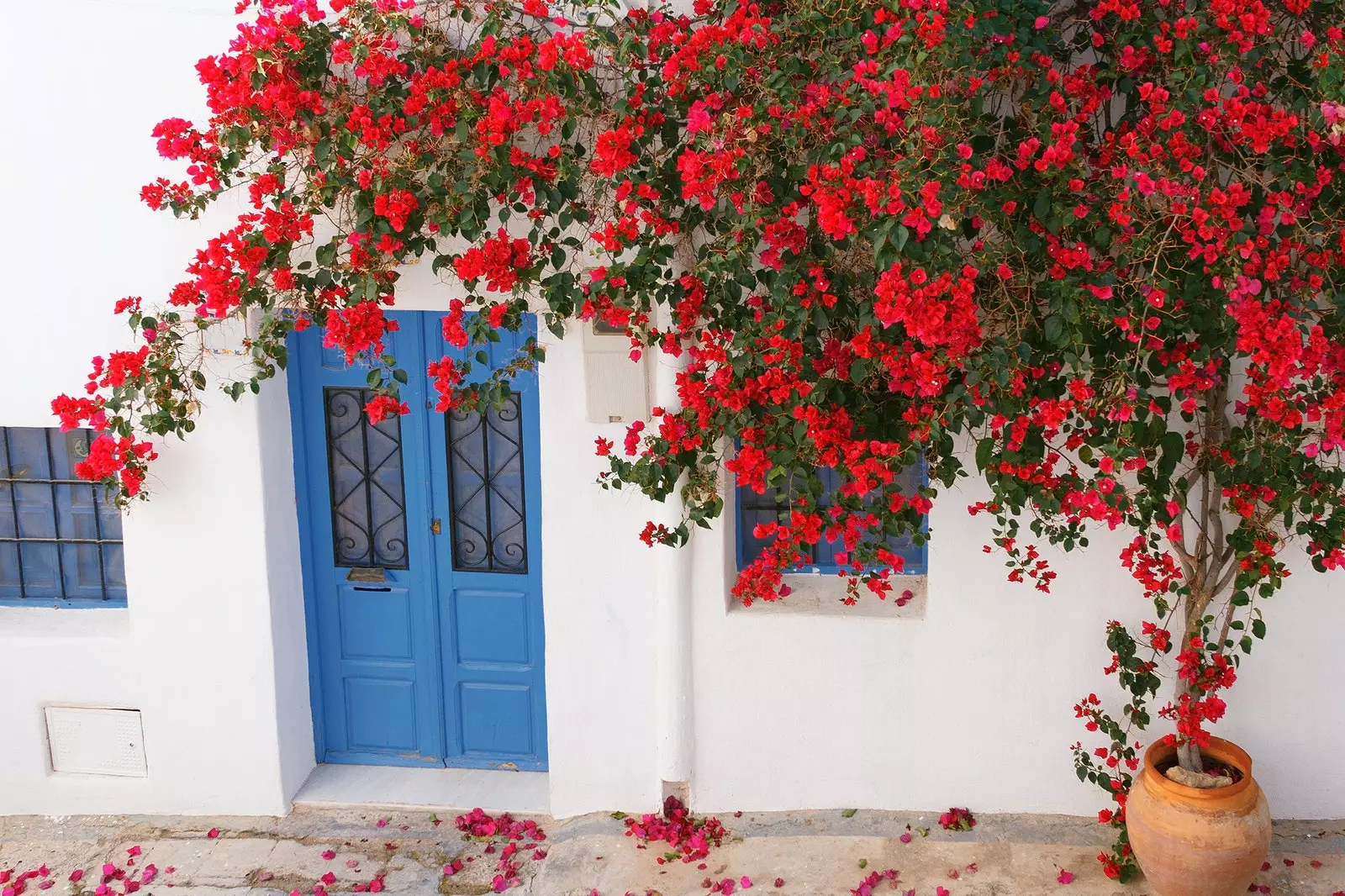
Give us a white house and some colored flowers to be happy
Wrote John Goytisolo in his travelogue Nijar Fields that “the first impression -wild and somewhat inhospitable- that Níjar inspires to the traveler who comes along the path of Los Pipaces, vanishes with proximity. The surroundings of the villa are harsh, but the efforts of man have harmoniously transformed the landscape. The slope of the mount is staggered with paratas. Fruit trees and almond trees alternate on the ocher of the land and olive groves tumble down the vegas, just like runaway herds. Níjar is embedded in the buttresses of the mountains and its houses seem to retain the sunlight.
A book, by the way, that should be a must-read for those who come to those parts. Written in 1959, Goytisolo spoke in this travel chronicle about the human and natural landscapes he encountered, back then, on his walk through the fields of Níjar.

Little white houses in a sea of clay
An unheard-of place, whose image was of a violent nudity that collided head-on with everything he had previously seen in Europe. Since then, the writer has been marked by the beauty of the land of Nijar.
Currently, the Villa de Nijar is one of those places that still have the ability to make us Appreciate the beauty of simple things. This is something that is often said about many destinations, but it really happens here, in a natural and totally organic way. Without pretentions.
When I was told that Níjar had been included in the list of The Most Beautiful Towns in Spain, I found myself surprised. But not because said national network had put the magnifying glass on this town of Almería, recognizing, thus, its historical values and its local, cultural, architectural and natural heritage; but by the fact that this had not happened much earlier.
To get to Níjar you have to first cross a sea of yellow and gray clay which we will have to talk about later, since they form an elemental part of the life of its inhabitants.
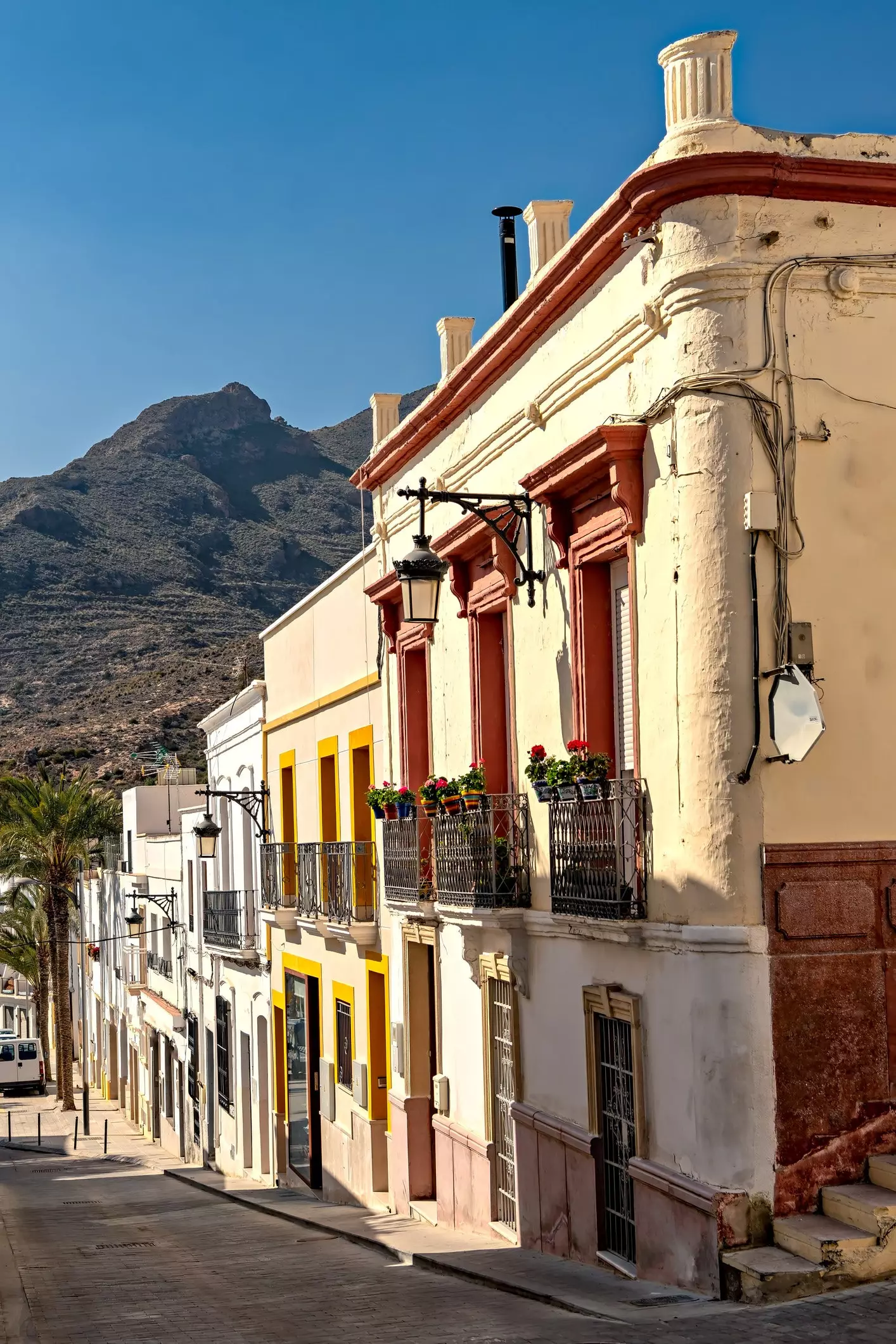
Streets to get lost forever
In this wild backdrop, Níjar emerges with its completely whitewashed cubic houses, A magnificent example of traditional Almeria architecture that contrasts with the solidity of the mountain stone of the 16th century Mudejar-style church of Nuestra Señora de la Encarnación. The urban complex speaks to us, openly, of a Moorish past, how could it be otherwise in this area of the peninsula so eminently Mediterranean.
Located in the vicinity of Cabo de Gata-Níjar Natural Park, its streets are peaceful, white, clean, full of colorful flowers and small squares. Streets that are given to those who walk them daily under a sun that presses harder in semi-desert environments, like this one. And, unlike what happens in nearby towns such as Las Negras or San José, during the summer months, Its tranquility is hardly altered by the arrival of tourists and Sunday people, since it does not have a beach.
The reader does not believe, then, that since the urban center of Níjar is not within the protection area of the Natural Park, and is not lulled by the crystal clear waters of the Mediterranean, it has nothing that could interest the visitor. Well, if I thought about it, I would be making a tremendous mistake. And I can't let that happen.
I reaffirm that Níjar is a quiet town, where you can reconnect with the simple life. Where the silence is. And where the crafts of clay, esparto and jarapa are still preserved.
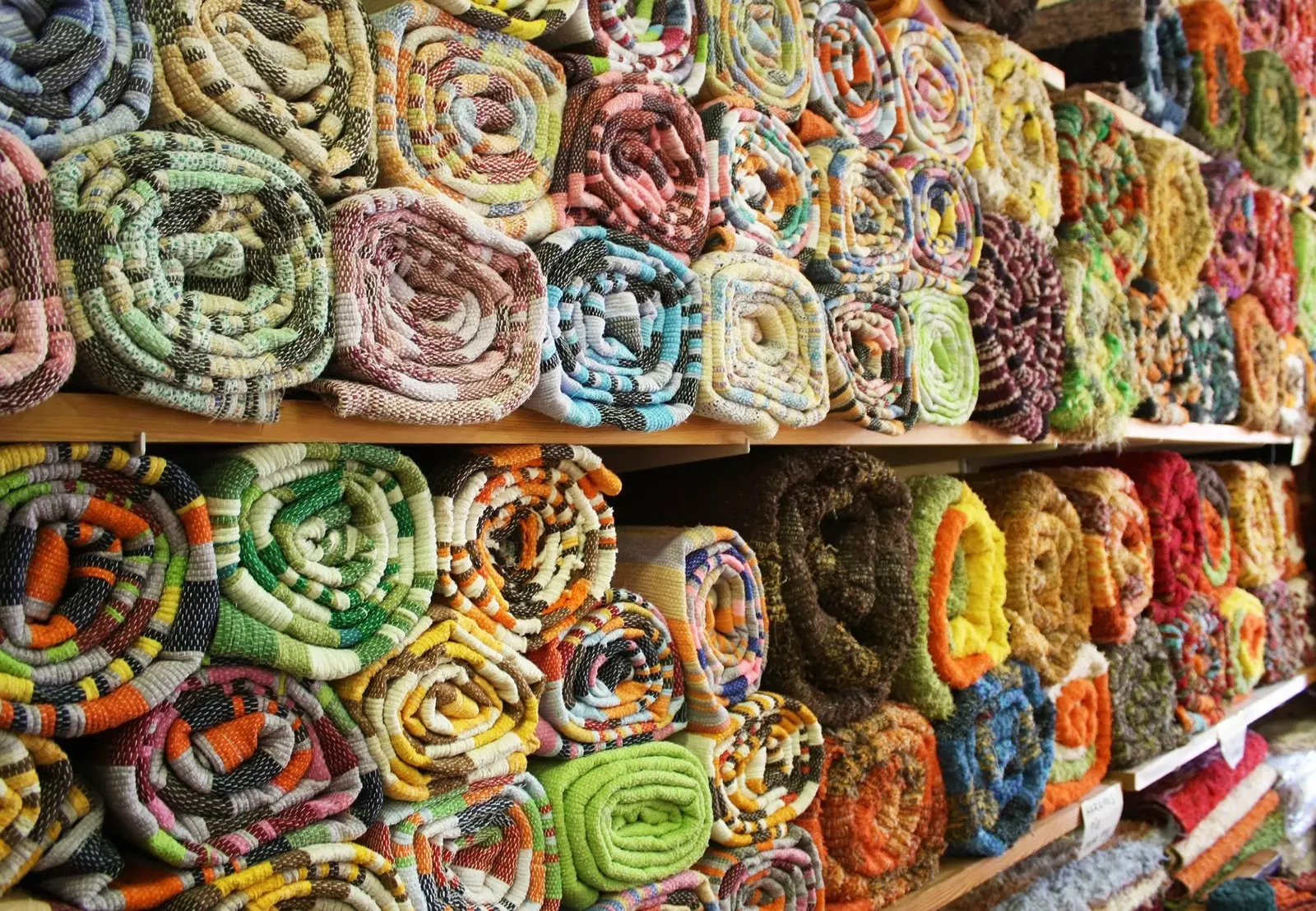
you will want them all for yourself
To discover the local arts, the ideal is to allow yourself a quiet walk through the pleasant and traditional shops where you can buy handicrafts from the area. And, although there is an increasing presence of products manufactured abroad, the artisans of the place are still at the foot of the canyon, demonstrating that there is nothing like what is produced right there.
The making of the colorful jarapas is still going on in the workshops of the stores themselves, so that the visitor who enters one of these shops will be able to see for himself the ins and outs of the loom with which the leftover scraps that arrive from factories throughout Spain are transformed -old rags were used in the past- on rugs, blankets, bedspreads or curtains. A tradition that dates back to the Muslim era in this region and is characteristic of eastern Andalusia.
The clay soils of the area serve as raw material for handmade ceramics. The pottery of Níjar is tremendously colorful and appreciated and, although, originally, its manufacture was due to the need to transport and store water in dry environments, today, it is the decorative pieces that take the cake. Yellow, bluish, greenish and brown colors on a kaolin background serve to visually distinguish the pottery of the place and of which at least four or five workshops are still preserved.
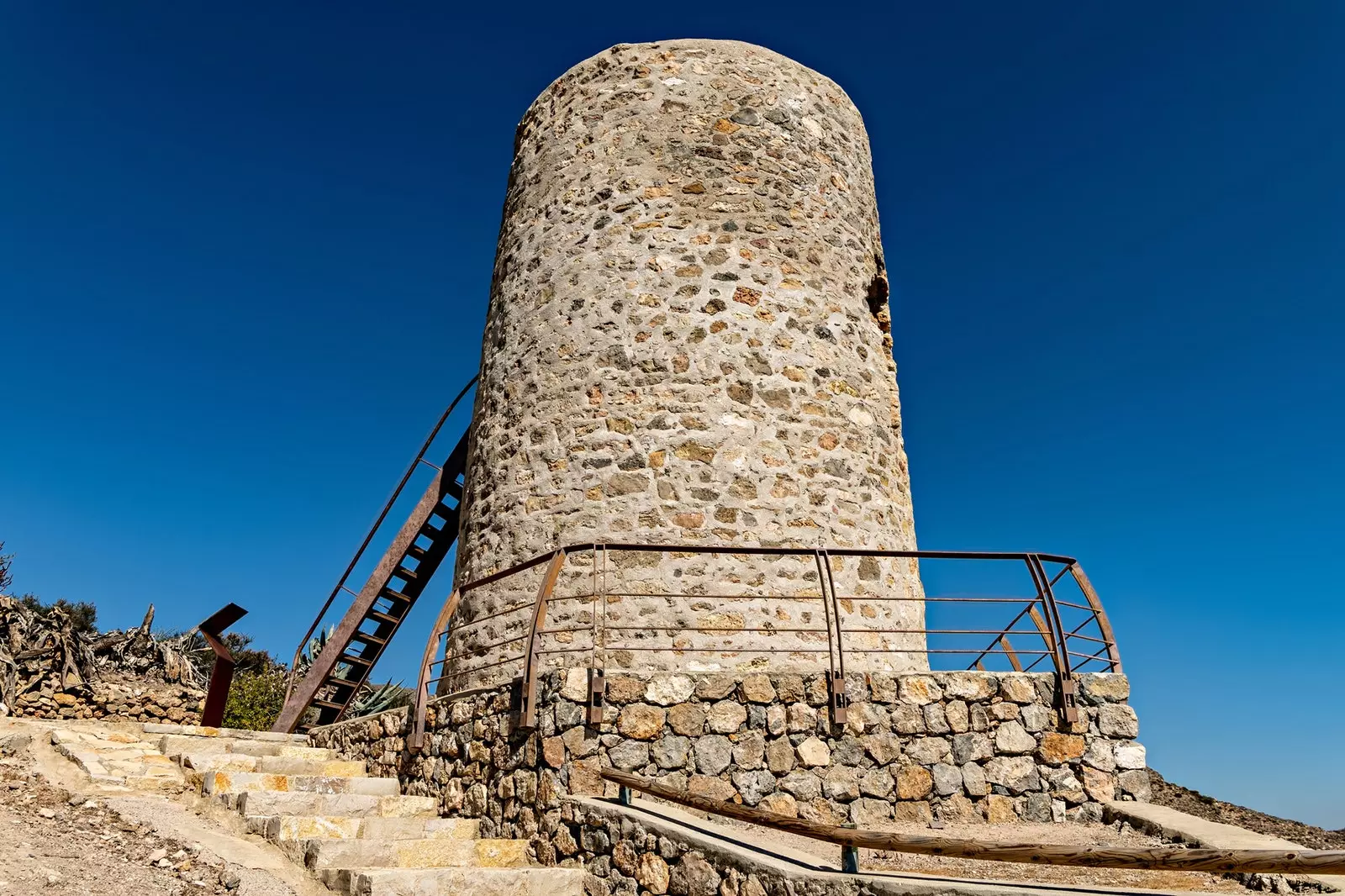
A watchtower to see it all
The emblematic building of the old market of the town is occupied, today, by the ** Museum of the Memory of Water **. A unique museum space that has served to recover the property and make it reborn as place of knowledge about the culture of water, taking the extreme environmental, geological and vegetal conditions of the municipality of Níjar -one of the largest in the country- as a common thread to talk about the importance of water in all kinds of manifestation of life.
If the walks between alleys of Arab reminiscence, encounters with stray cats and the occasional burrito or trying to decide between which jarapa or which piece of pottery will go better in your living room make you go gazuza, **the El Mirador pizzeria or the tapas bars Pata Negra or La Parada ** They will relieve your hunger and help you gain strength to continue giving yourself to Níjar.
In this land of lizards and broom, There is also a place to see butterflies. Many butterflies. Their presence is less and less, since there is more cement and fewer flowers, so the **Níjar Butterfly Park** becomes the perfect place to see them more closely and learn about the almost 300 specimens of almost 30 different species from all over the world and that are cared for with love and attention among flowers, trees and fountains.
Also cacti and other desert plants, so associated with climates such as that of Almeria They have their own space the nursery ** Nijar Cactus **. A place to go for a walk and enjoy the scenery, since the garden flows naturally through this mountainous desert habitat and under the gigantic blue dome that is the Almeria sky.
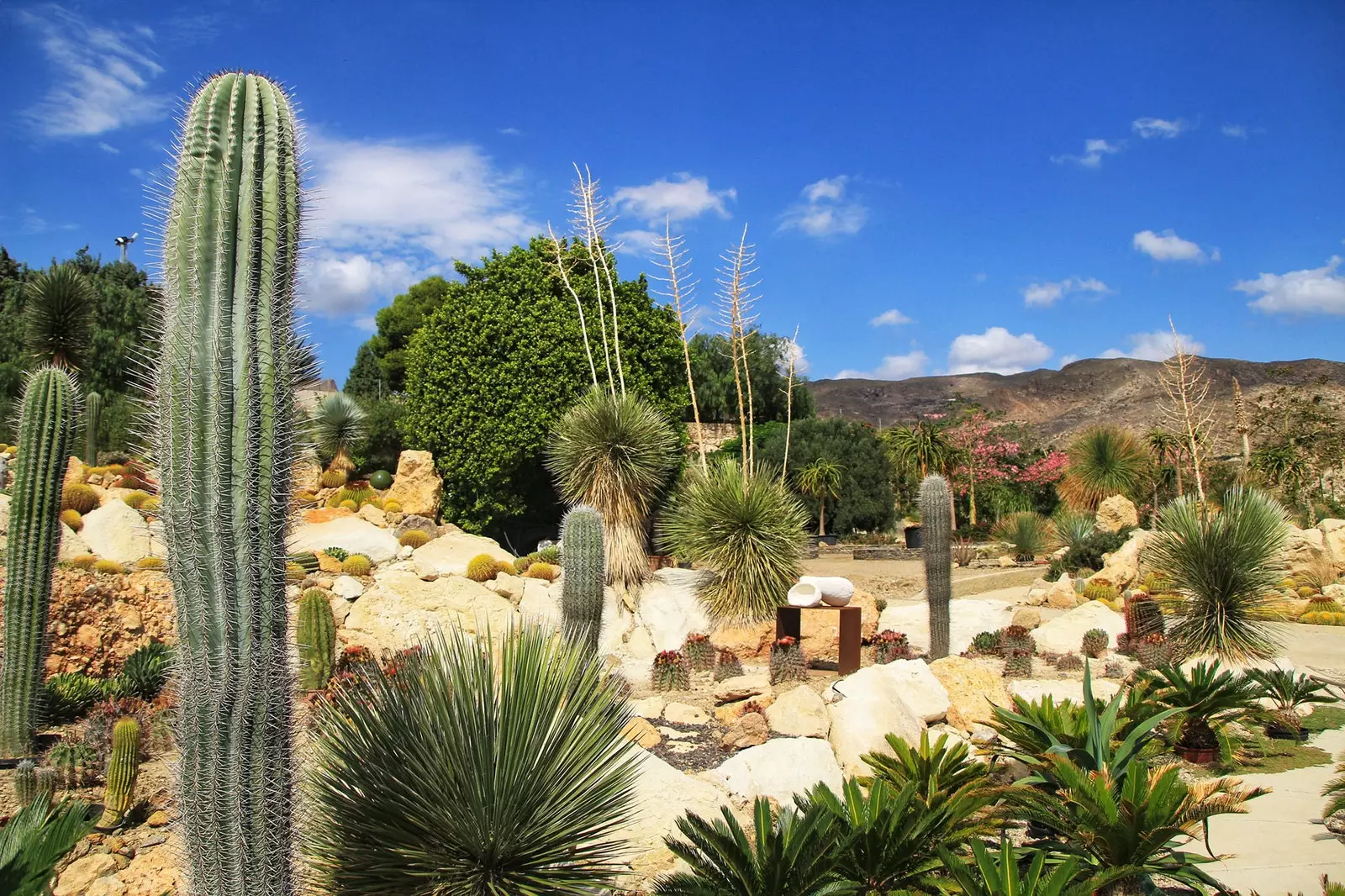
Nursery Cactus Nijar
As if that were not enough, running into something like this -and whose admission is free -, often, and especially in summer, its owners organize all kinds of outdoor concerts in these gardens.
As the intention is that you don't have to leave the town even to sleep -unless you want to see the sea, which then you will have to-, the Manzano farmhouses are presented as an ideal option to stay, in addition, in a typical rural dwelling in this area.
Those of us who, at some point in our lives, have spent time getting to know this town, lying on the slopes of Sierra Alhamilla, know that Níjar has something endearing in its very essence and that is that place where you can breathe easy. As if, somehow, we had reconnected with our origins. Like playing 'home' after almost getting caught in the hideout. And for those who still don't know Níjar, perhaps the time has come to start doing so.
